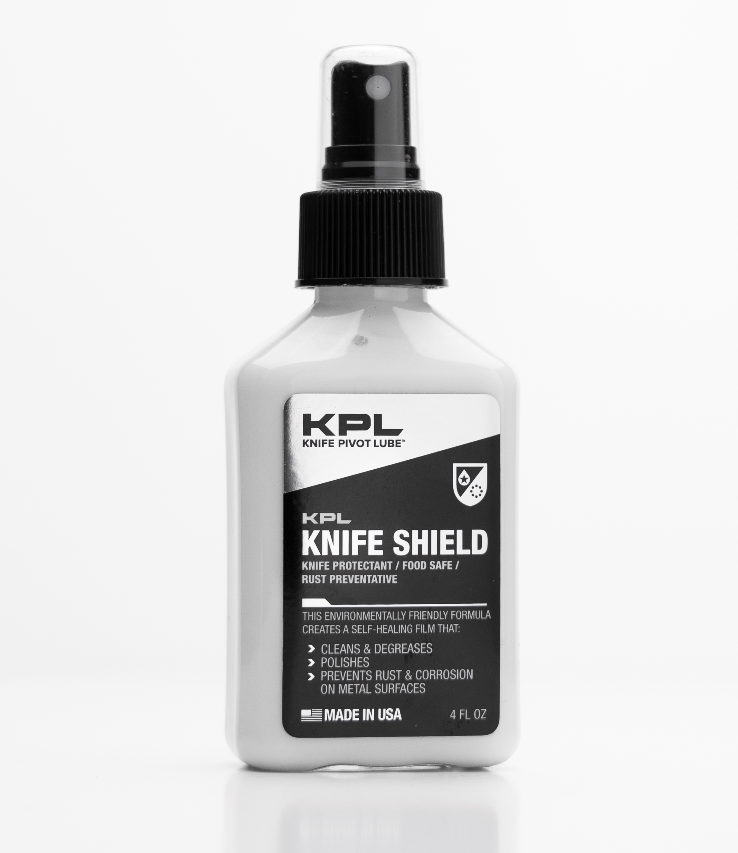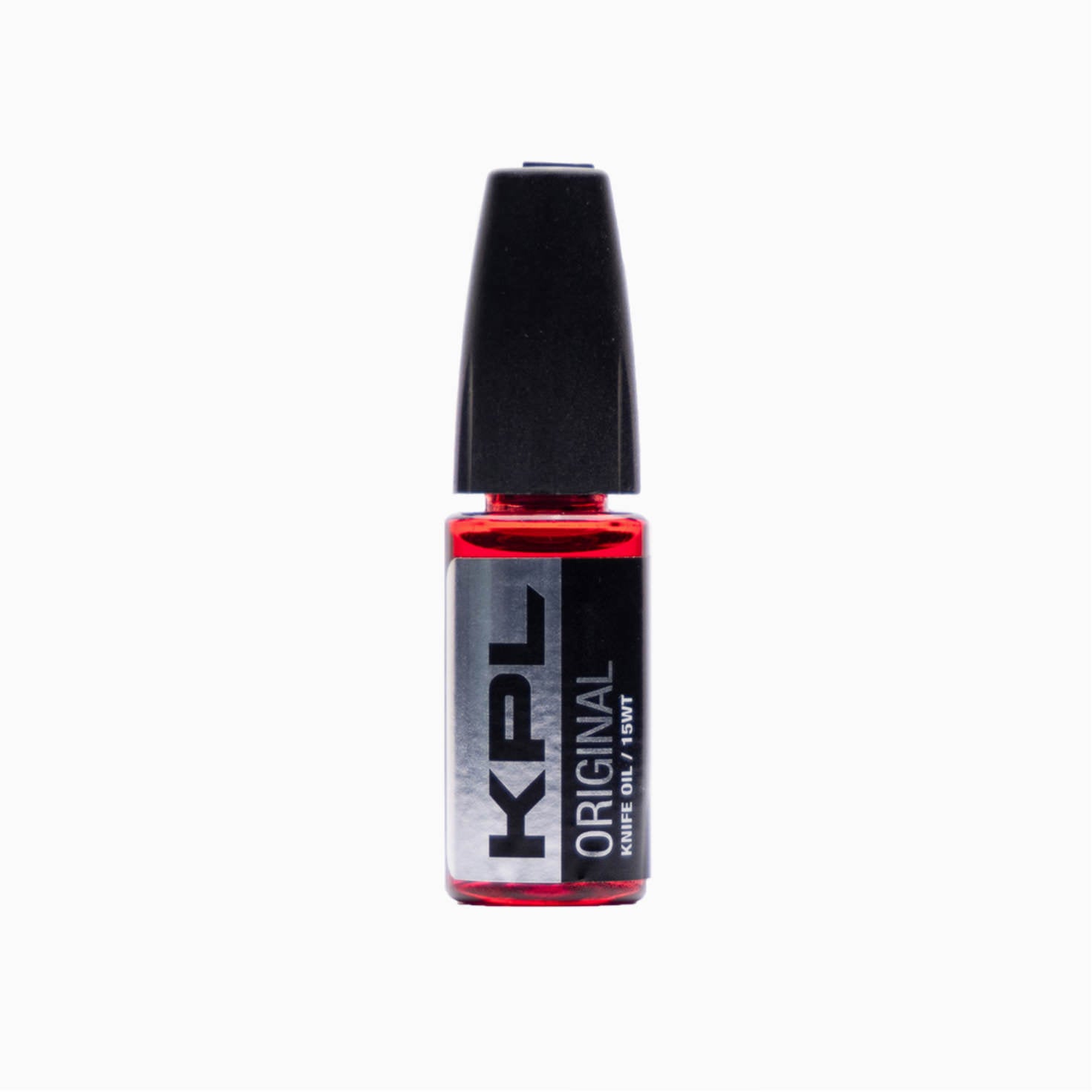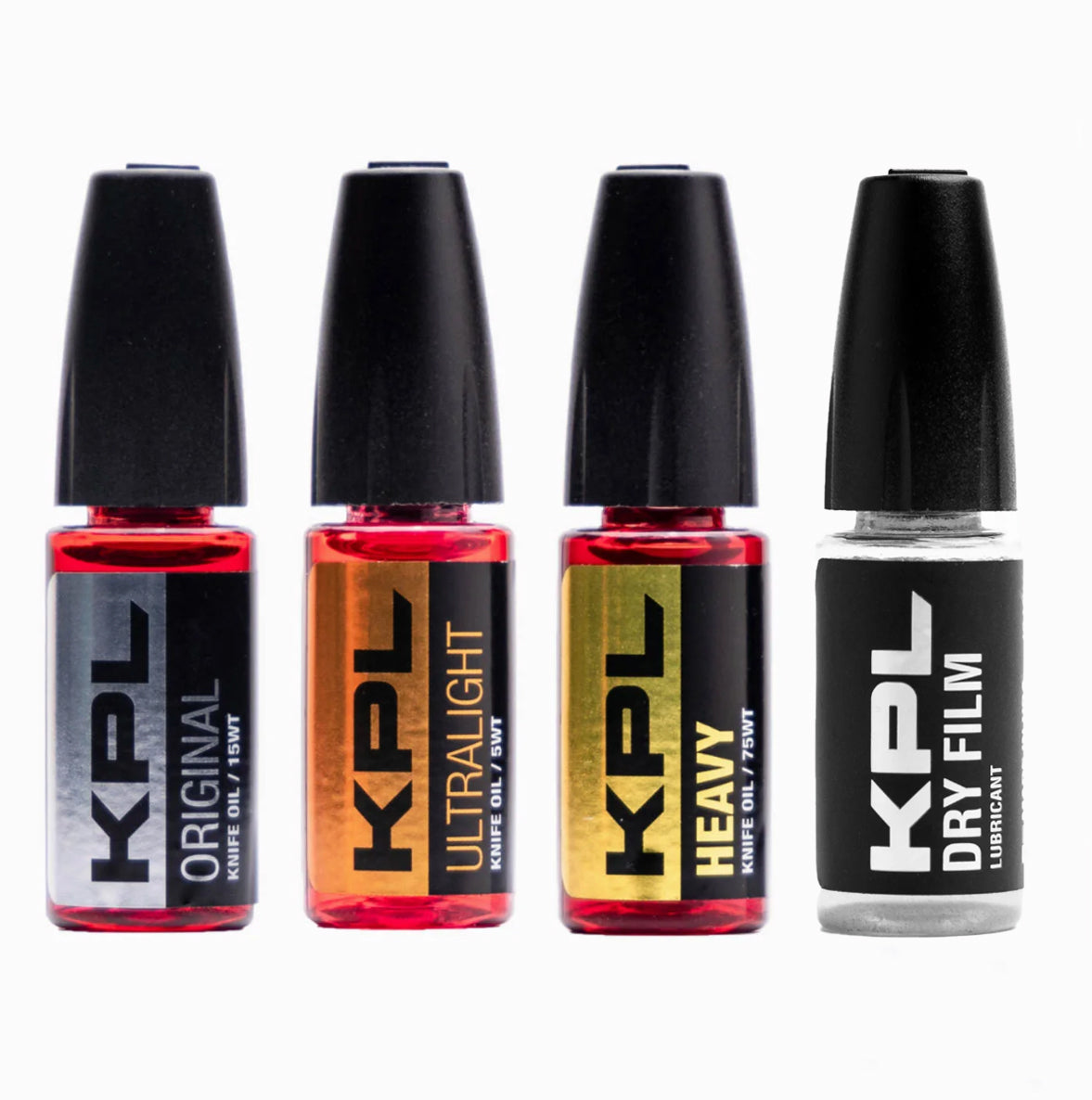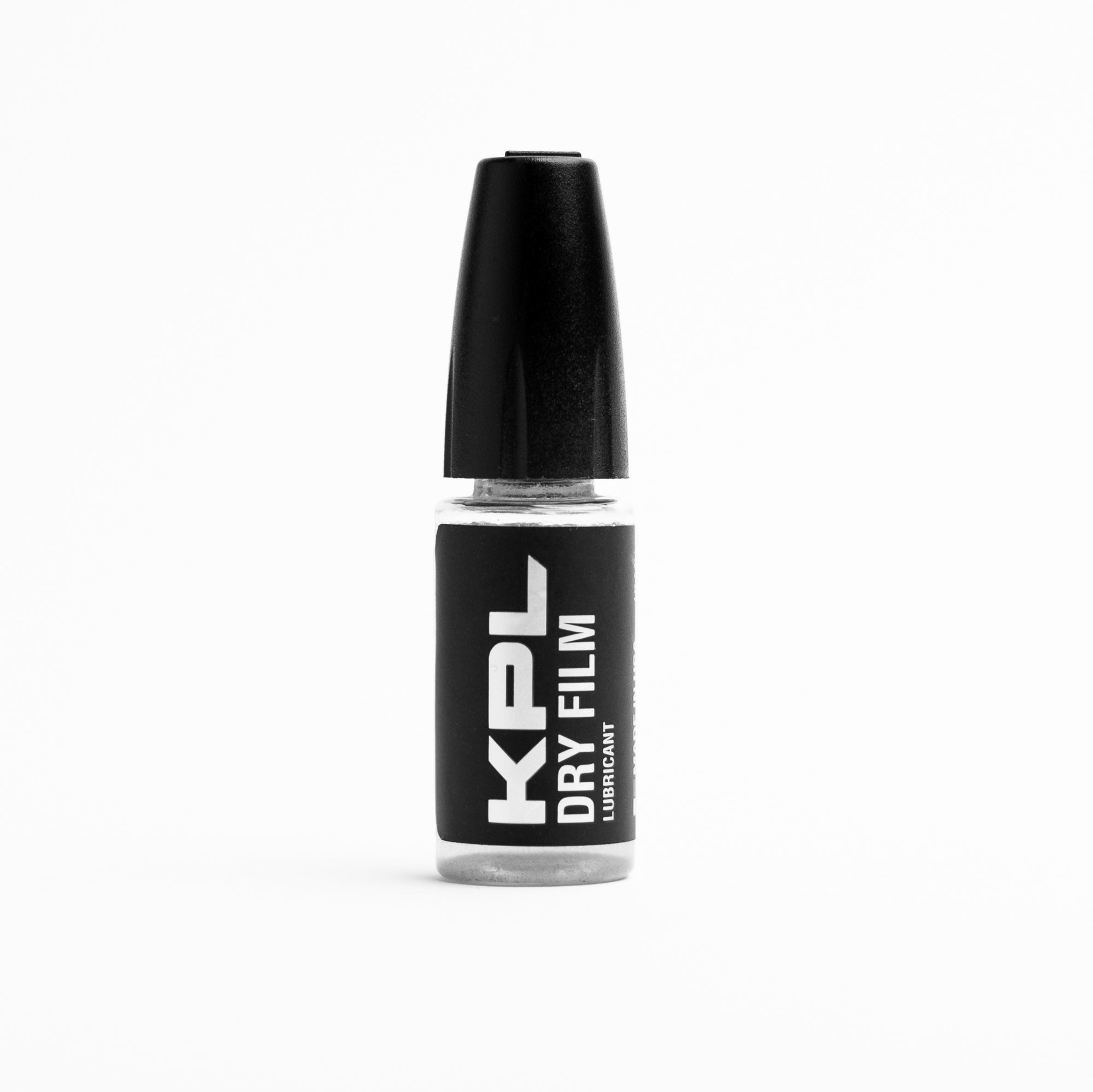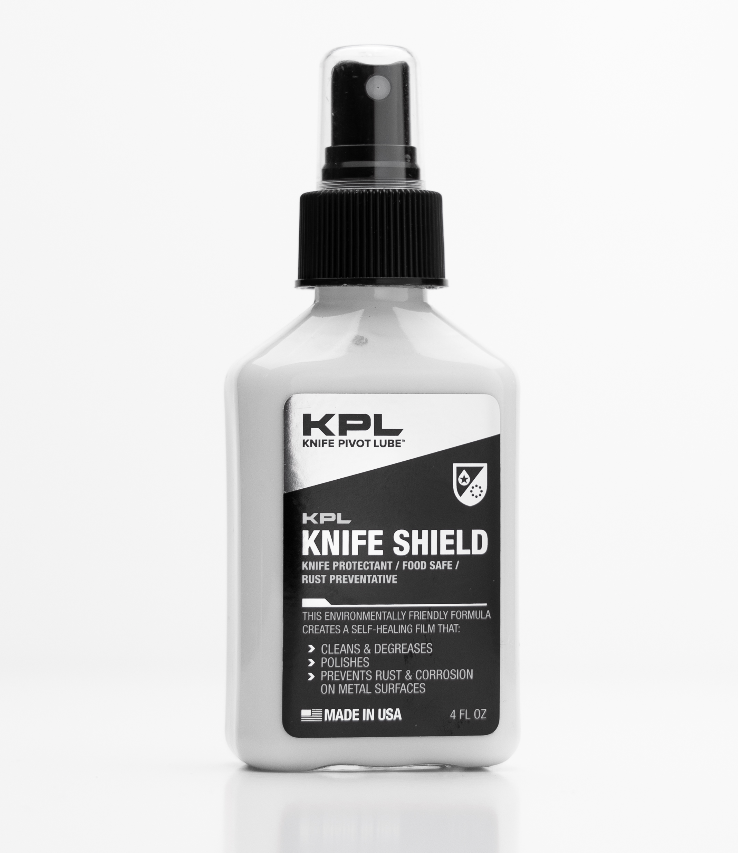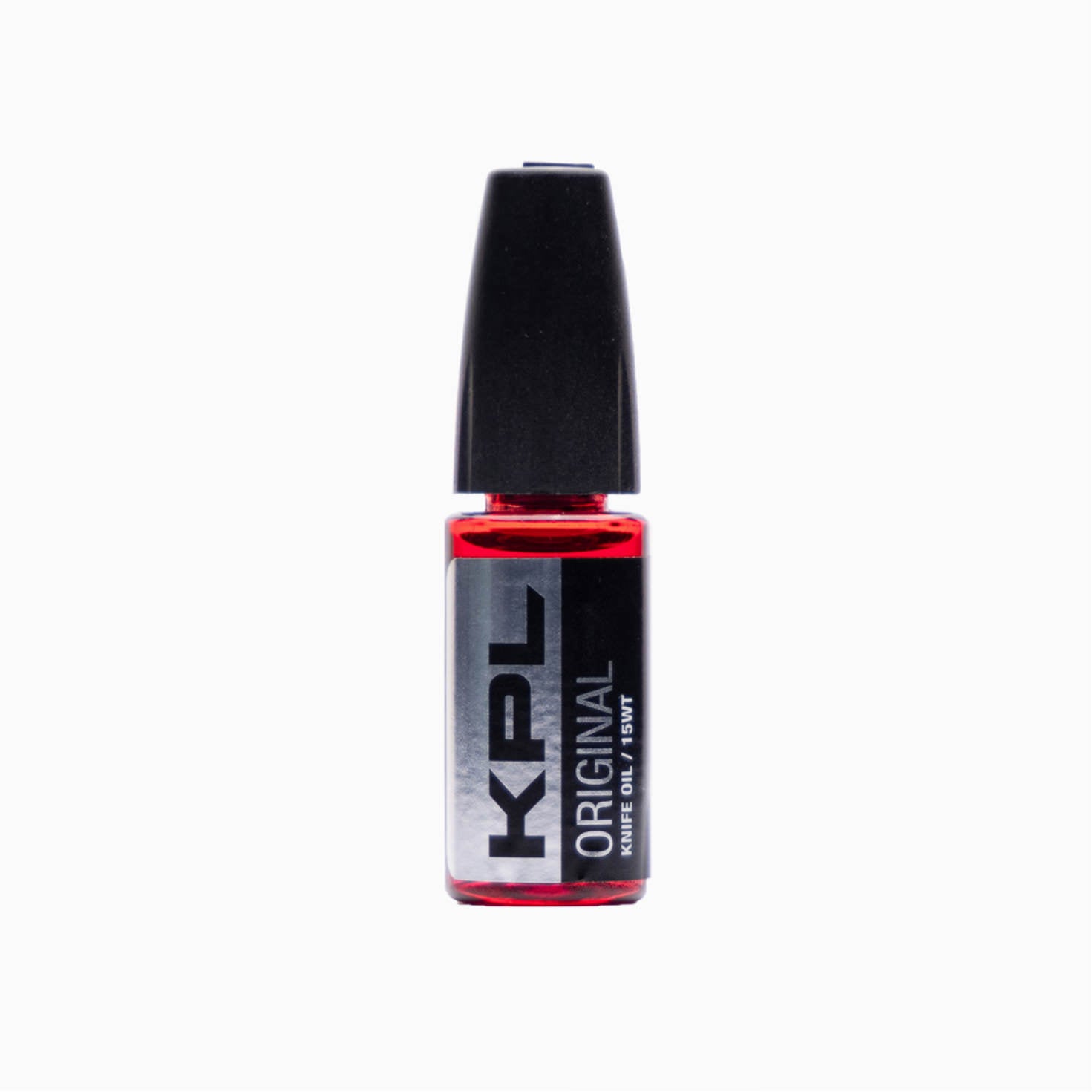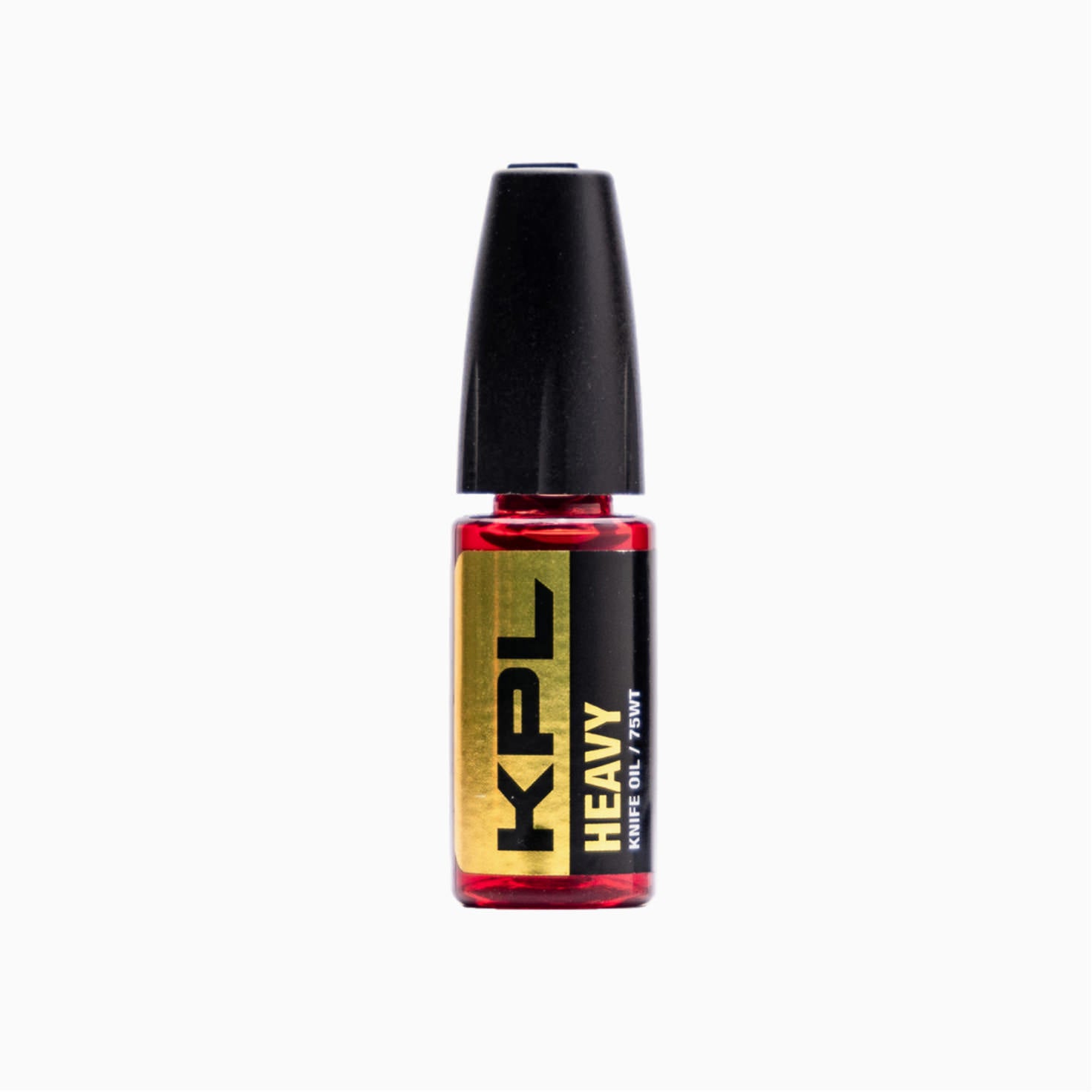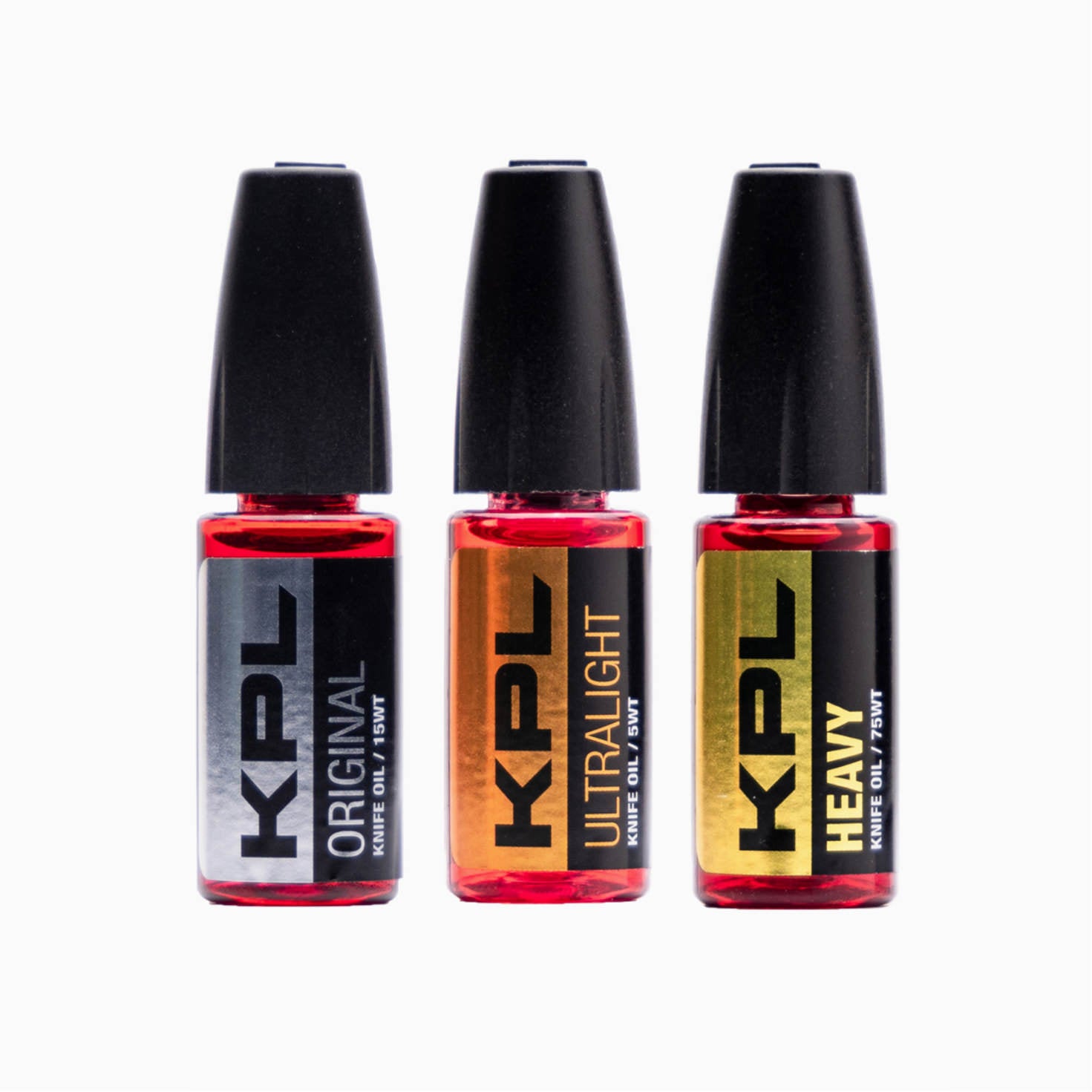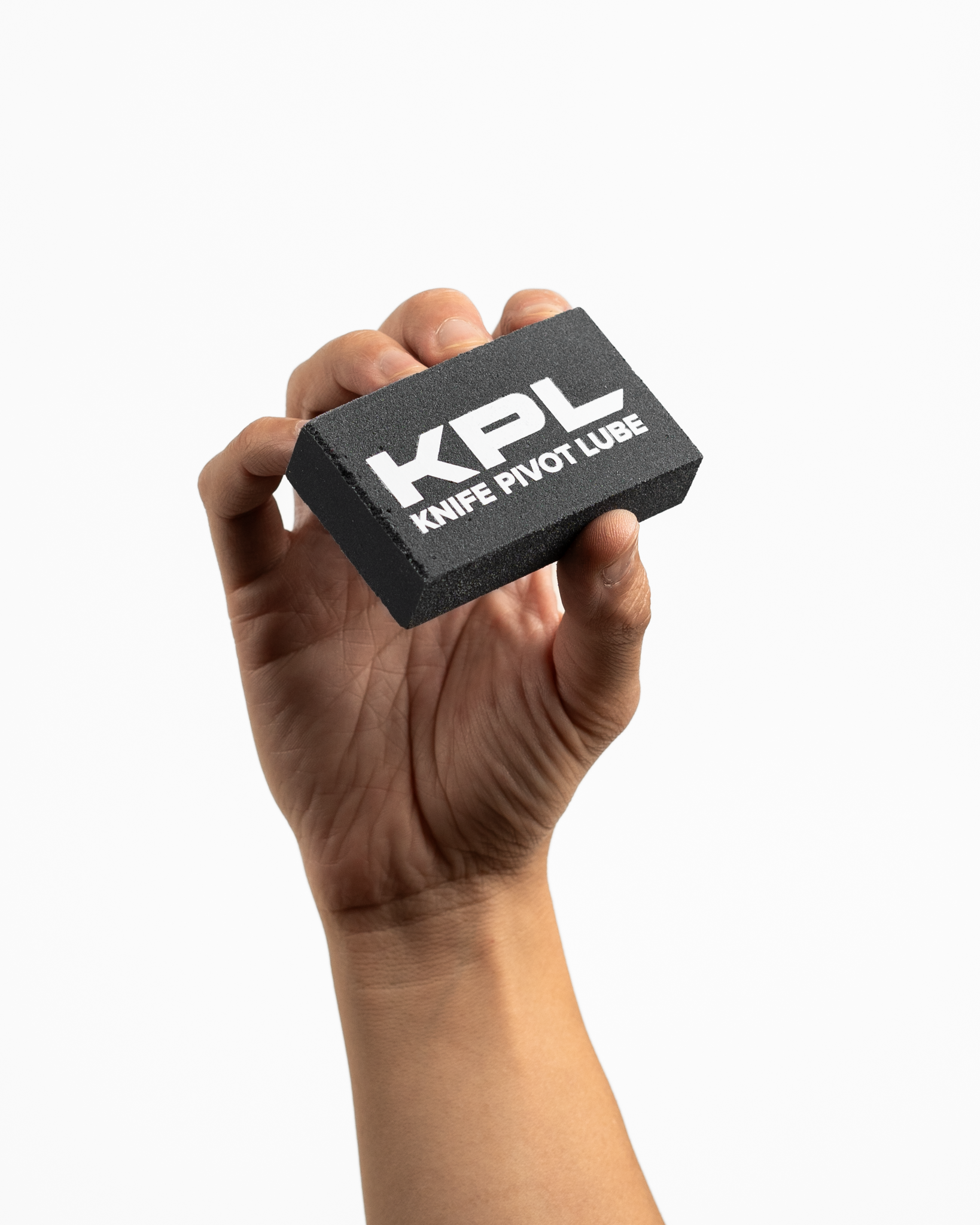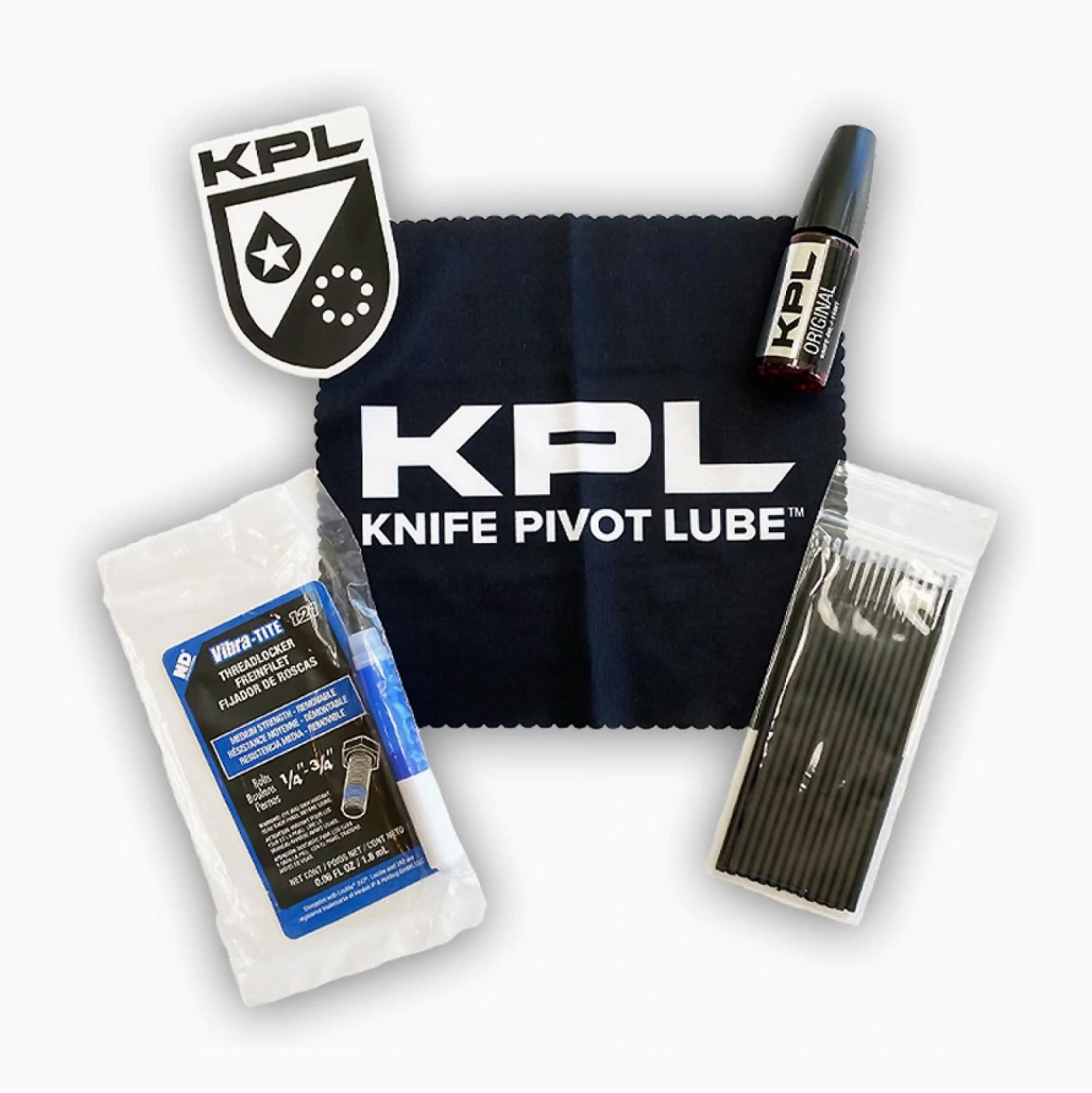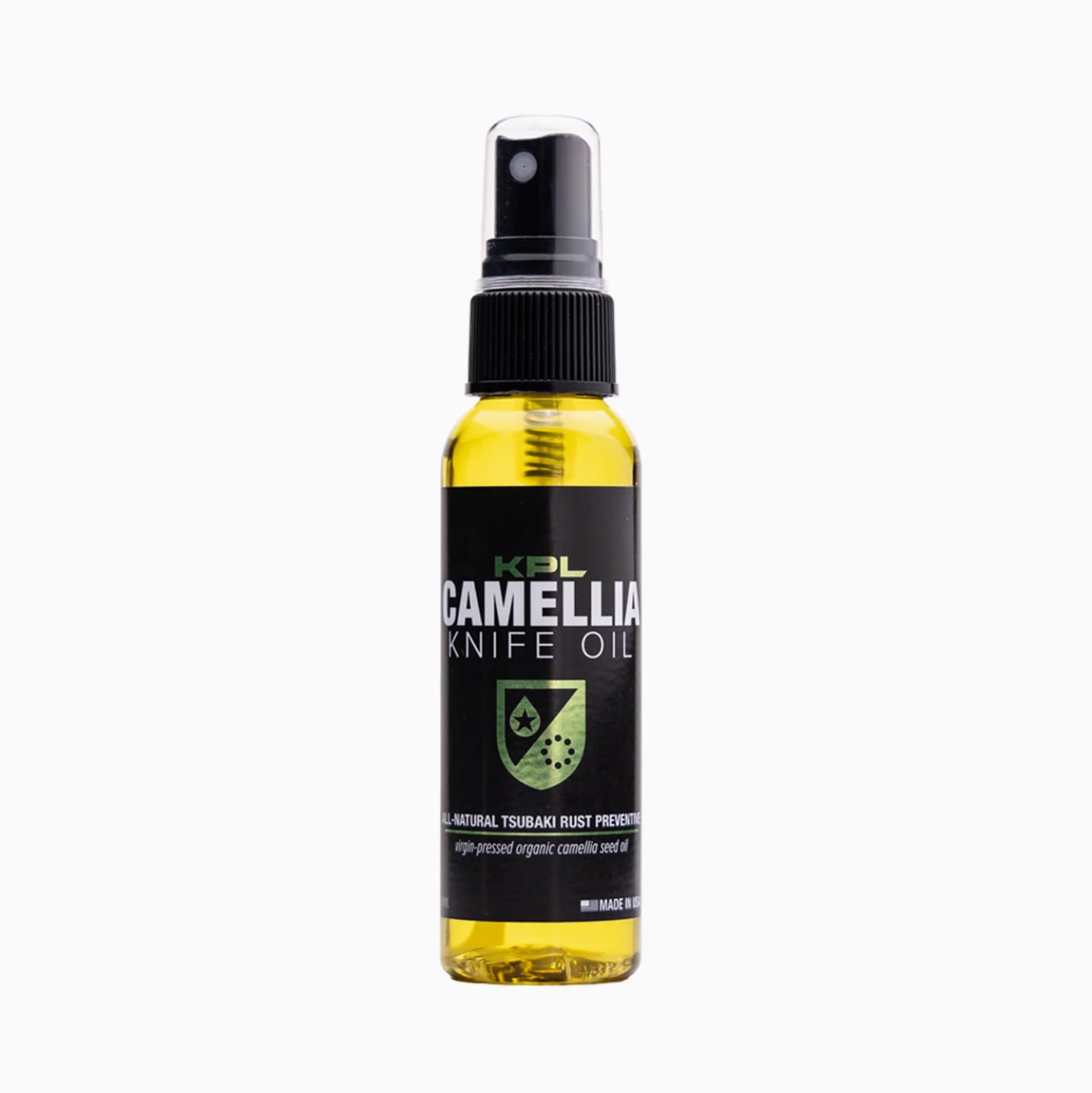With so many new flippers, creators, and makers getting into the balisong game these days, the number of experiments and innovations in the industry is guaranteed to rise. Even in just the past few years we've seen some amazing new features introduced, and some have already made their way into several different knife models.
Although there have been some cool ideas and developments in recent years, not all of them find ubiquity in the industry.
Let’s take a look at some features of butterfly knives that have been introduced (somewhat) recently, and have been so well-received that it’s hard to imagine them going away anytime soon.
1 - Latchless
Let’s get an easy one out of the way. Flipping latchless is certainly nothing new, however the number of balisongs that are manufactured without a latch has steadily increased over the years.
There are some good reasons to flip latchless. The extra weight at the end of the handle can make the latched handle a bit more heavy, making flipping a bit uneven. A poorly designed latch can also get in the way while flipping, making it a bit of a nuisance!

There are, of course, many advantages to latches as well. Having a knife that is able to be locked open or closed is somewhat expected from edc and safety perspectives, there are some open/locked tricks that can be performed more easily with a locked knife, and it serves as a bite handle indicator.
Despite these advantages, to most flippers the cons outweigh the pros, and some of the drawbacks of having a latchless knife can be solved in other ways. There are still ways to safely carry a balisong either by using a slip or sheath, carrying tip-down, or getting a specialized product (such as a Bali Boot or Punk Band), and there are a lot of options for bite handle indicators that don’t affect the balance and performance as negatively as latches can.
Not only are more and more balisongs being made latchless, but even some latched balisongs are coming in latchless varieties. Some latched balisongs are being shipped without latches installed, leaving the customer responsible for attaching the latch if they want to (such as the BRS Replicant).
2 - Jimping
Jimping is another feature that is obviously not at all new to knives or balisongs, but could definitely be considered a feature that is much more prevalent today than it used to be.
On most EDC knives, jimping is used to allow the user extra grip during cutting tasks, making for an easier and safer experience.
On balisongs, jimping adds extra grip - although for very different reasons. You would not want jimping on a butterfly knife in the places you would find it on a fixed blade or folding knife - this would make it very uncomfortable to flip!
Instead, jimping is almost exclusively found on balisongs at the ends of the handles opposite the pivots, and is used for grip while performing tricks, rather than cutting tasks.
Why am I so confident that jimping is here to stay? Simply put: community reactions to balisongs released with poor or no jimping. If a new bali comes out without jimping it is almost guaranteed that there will be an abundance of “What?? No jimping!?!” comments from flippers in the community.
A great example of this is the BBFirefly from BBbarfly - the v2 came out shortly after the v1 and took into account feedback from the community, and one of the things that was added was jimping.

The popularity of jimping can also be seen in some aftermarket parts that allow users to add jimping to knives that don’t come with any stock.
A great example of this are the spacers made by Fox Fire Factory for the BRS Replicant. Although Reps don't have jimping in the stock configuration, upgrading to Fox Fire's spacers will give you a bit of extra grip.
Although some extremely popular models do not have this feature, most new balisongs that come to market do, and many flippers have come to expect this feature on their knives.
3 - Modular Weight Systems
Next up is one of the most recent innovations in the balisong market - modular weight systems.
The weight and balance of a knife is extremely important to how it flips, but different balances can make it easier or harder to perform certain tricks. To make things more complicated, not all flippers have the same weight preferences.
Balance exists on a sliding scale of blade heavy to handle heavy, with “neutral” referring to a balance between the two.
In the past, people have adjusted the balance of their knives by modding. Swapping out spacers, reblading, and completely rehandling knives have long been methods of getting a knife’s balance to exactly where you want it, but these all involve extra costs and can sometimes be a headache.
Modular weight systems offer an alternative to these other methods. They allow you to change the weight and balance in the knife by moving, adding, and removing weights from the knife, most often from the handles.
Notable examples of knives with this feature are the Heed Industries Seaknight, Squid Industries Tsunami, MachineWise Serif, and JK Design Embargo. All of these balis implement their modular weight system in slightly different ways, but they all ultimately accomplish the same goal and make the knife more appealing to a more diverse pool of flippers with different preferences.

4 - Aluminum Handles
While we’re on the subject of weight and balance, it’s no secret that flippers will stay far away from knives that are too heavy. Typically heavier knives have pretty awful balance and can be difficult to flip, earning them little praise from the flipping community.
Flippers also have a tendency to drop their knives…a lot. This means that handles should be light, but also strong enough to withstand some pretty serious abuse.
Although steel is plenty strong, titanium is about 45% lighter and just as tough. Despite being much more expensive, titanium was the go-to balisong handle material for years.
Aluminum was generally avoided by balisong makers because although it’s lighter than steel and cheaper than titanium, it’s not as strong as either and is known for having a slippery finish. This makes it less able to take a beating as well as being harder to flip - doesn’t sound much like a good option, does it?
Despite these seemingly obvious drawbacks, the use of aluminum in balisong handles has exploded in popularity in recent years. Most people point to Squid Industries as the pioneers of aluminum, and since then many other makers have released their own aluminum-handled models to the market.

So how did aluminum become so popular? Essentially, makers were able to account for aluminum’s disadvantages just enough to make their products marketable for flipping.
First, the type of aluminum that’s used in most popular aluminum balisongs is 7075, a much stronger alloy than 6061. Although 6061 is much easier to machine and is still used in some balis, 7075 offers a higher strength material for a cost that is still cheaper than titanium.
Second, although this problem has not been completely solved, the slipperiness can be reduced by the use of jimping. One could even argue that jimping has become such a popular feature because of its use on aluminum balisongs - as more and more makers started using aluminum, more and more jimping was needed!
Although titanium is still widely regarded as the best handle material for balisongs, aluminum has dug its feet into the balisong community and doesn’t appear to be going anywhere. Also, you can achieve colors through aluminum anodization that you can't with titanium.
5 - Crowned Spines
Crowned spines is another feature that is not all that new to knives or balisongs, but is certainly here to stay. In fact, it’s almost become something that flippers take for granted!
There are a few reasons you might want a knife with a flat spine. They can be used to strike ferro rods, open bottles, and decrease the likelihood that your hand will slip during use.
For flipping, crowned spines are like night and day when compared to flat spines. Flipping a knife with a flat spine can be fairly uncomfortable, especially if the edges are a bit rough.

Most new balisongs that are hitting the market are made for their flippability, and therefore will almost always favor features that improve flipping comfort over ease of cutting and edc tasks.
6 - Trainer Versions
The “live blade vs trainer” debate has been going on in the balisong community for years. One of the key points in this debate is that 'live blade x' will have a different weight and balance than 'trainer y'.
So, flippers wanted a solution to this problem: "I want to learn tricks on a trainer and then transition to a live blade, but my trainers and live blades are so different that it’s difficult to switch back and forth between the two."
One solution is to tape the blade, preventing you from getting cut without ruining the edge or altering the balance of the knife too much.
Although this is a decent solution to the problem, it’s not perfect. You may end up with a lot of tape gunk on your knife, the blade can get stuck on the handle if not taped correctly, and heavy tapes still add some weight to the knife which can slightly alter the balance.
In more recent years, we’ve seen more and more balisongs come out with both live and trainer options.
The goal of these trainer versions is often to get as close as possible to the flipping experience of the live blade version, but without the risk of injury. This can be easier said than done, though, and achieving a trainer blade with the same weight and balance of its live counterpart can be extremely challenging.
Even more recently, some trainer versions of live blades have been released without attempting to maintain identical weight and balance to the original. The Orca Trainer from JK Design is a perfect example, which is a completely different flipping experience than the live Orca.

Trainers are also much easier and cheaper to produce, have fewer legal restrictions, and are often more appealing for beginners first getting into the hobby, so there’s little chance that trainer versions will lose any popularity in the foreseeable future!
7 - Plastic Balisongs
One specific trend in balisong trainer production has been the use of plastic. The Squiddy may have been the first widely available plastic balisong, but nowadays it has plenty of competitors.
Generally speaking, plastic balisongs are extremely light. This means that even if well-balanced, plastic balisongs flip much differently than metal ones, which can make them challenging to get used to for some.
Despite their low weight, plastic balisongs have certain advantages, and are great for people just getting into the hobby.

Most are relatively inexpensive, so you won’t have to break the bank to get one. They’re also almost all trainers, with one exception being Zippy Balisong’s plastic handles for the Kershaw Lucha.
As an extra bonus, there’s a good chance your plastic bali is TSA-friendly, meaning you can fly with your plastic trainers and have something to flip while you’re waiting for your flight!
8 - Zen Pins
Zen pins aren’t new, and of course they’re not going anywhere. Tang pins aren’t going anywhere either.
So why are zen pins on this list? Because of how prevalent they are as a pin system throughout the balisong market!
Tang pins are the traditional pin system of the balisong, and are still found on nearly all FHM balis. They’re still commonly used in modern balisongs as well, being used more than pinless but less frequently than zen pins.
Pinless balisongs are the least common of the three main pin systems, found primarily in high-end knives.
That leaves zen pins - the most used pin system for modern balisongs. So what makes them so much better?
Some flippers prefer the feeling of zen pins better, which can provide a “bouncier” feel on certain knives. There is also a sonic element to it - different pin systems can produce different sounding balis, which is one of the appeals of flipping for the bali asmr enthusiasts.
Hidden zen pins also allow for a clean aesthetic, stopping zen pin screws from getting in the way of the maker’s design.

Finally, some knife designs make use of zen pins as components in their modular weight system. This gives them additional purpose than just allowing the knife to lock open and closed.
9 - Cerakote Finish
Customizability is an amazing way to make a balisong your own, and there is no shortage of options for bali modifications! However, some knives are more customizable than others.
The BRS Replicant might be one of the most customizable balisongs on the market. This is because of a ton of reasons - the materials used, its design and construction, its popularity, the high number of variations released by BRS, and the abundance of aftermarket parts available for it, just to name a few.
Not all models are as moddable as the Replicant, though. Titanium only offers a limited number of colors that can be achieved through anodization, and acid washing has even less variety than anodizing
This is where cerakote comes in!
Cerakote is a thin but durable ceramic coating that can be applied to a variety of materials, including metals. This means that not only can you cerakote your knife’s handles, but you can do the blade as well!
One of the main advantages of cerakote is that it allows you to achieve finishes of colors that aren’t possible through the normal titanium anodizing process. This allows for some unique and striking design opportunities, such as the Devil from Hazetac (pictured below).

What’s Next?
As more and more makers and modders get into the balisong game, these knives will certainly see more and more developments and innovations. These are just a few of the innovations and changes that have happened over the past few decades, but are probably going to stay a while!
What new features do you want to see in newer balisongs? Do you think we missed one? Let us know in the comments below!
No matter what features your balisong has, it will always need a high quality pivot lubricant, so don’t forget to use code BARKHANDLE at checkout for 10% off your KPL order!


